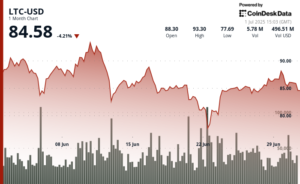Ripple’s Blueprint: Elevating the UK as a Global Crypto Leader
Ripple recently unveiled its ambitious four-point policy blueprint in London aimed at positioning the United Kingdom as a leading hub for cryptocurrency and blockchain innovation. This move comes amidst evolving global regulatory frameworks and is a clarion call for British lawmakers to act swiftly if the UK aspires to be at the forefront of the crypto revolution. By focusing on establishing XRP’s vital role within this vision, Ripple sets forth a comprehensive strategy that outlines specific regulatory pillars designed to foster growth and innovation in the sector.
Key Pillars of a Thriving Crypto Economy
Ripple’s blueprint consists of four essential pillars: a growth-oriented regulatory framework, proactive leadership on global standards, formal recognition of stablecoins, and the removal of legal and tax impediments to asset tokenization. Cassie Craddock, Managing Director for Ripple UK and Europe, emphasized the immense potential for the UK to carve out a competitive advantage in the global crypto landscape. The call for a structured regulatory environment comes at a time when the UK Treasury has made strides in drafting legislation that brings vital crypto and stablecoin activities under the Financial Services and Markets Act (FSMA).
Ripple’s Strategic Alignment with UK Regulations
The timing of Ripple’s proposals aligns with their recent announcement of a $1.25 billion acquisition of the London-based prime broker Hidden Road, signaling confidence in regions that offer clearer regulatory environments. While Ripple CEO Brad Garlinghouse noted that the U.S. market has become increasingly open following recent legal clarity, the firm’s investments in London indicate a strong belief in the UK’s potential to become a flourishing center for crypto activities. This strategic positioning is crucial as Ripple aims to leverage the regulatory momentum building in the UK.
Embracing Overseas Stablecoins
One of Ripple’s standout recommendations is the formal acceptance of overseas stablecoins, such as USDC and USDT. This approach positions the UK in stark contrast to the EU’s Markets in Crypto-Assets (MiCA) framework, which restricts circulation to locally issued assets. By embracing these foreign-issued stablecoins, the UK could create a competitive edge in post-Brexit finance, reminiscent of the offshore liquidity markets that characterized the Eurodollar boom of the 1950s. Such a move could significantly enhance London’s appeal as a global finance center.
Market Demand for Cryptocurrency
The urgency of Ripple’s recommendations is underscored by strong consumer interest in cryptocurrencies. According to the UK’s Financial Conduct Authority, approximately 12% of adults, or around 7 million individuals, currently own cryptocurrency. However, significant barriers remain that impede further growth and innovation in the digital asset space. Unlocking the potential of tokenization and addressing issues such as stamp duty are critical steps that British regulators must prioritize to stimulate the market.
The Time for Action is Now
While the UK’s draft regulations are projected to develop over the coming months, key elements such as definitive legislation and Financial Conduct Authority (FCA) guidance on stablecoins may not materialize until 2026. Ripple’s involvement—bolstered by substantial investment and their proactive policy advocacy—raises the stakes for the UK government. The pressing question is whether British regulators can seize this moment to establish market leadership before competing regions like the EU, Dubai, and Singapore finalize their regulatory frameworks. Ripple’s message is clear: act decisively to cultivate an environment rich in capital, innovation, and users, or risk allowing the next wave of fintech migration to take root elsewhere.
In conclusion, Ripple’s four-point policy framework serves as both a roadmap and a wake-up call for the UK to embrace its potential as a leader in the global crypto space. Time is of the essence, as the proactive steps taken now could solidify London’s position at the helm of a rapidly evolving financial landscape.

















